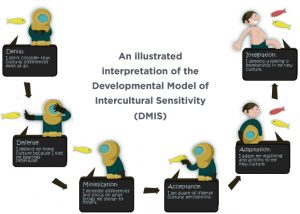ATA5
Assignment five involved selecting a topic from one of the listed chapters (4-14) and locating a journal article on the chosen topic. The student was then asked to summarize the article, compare the country they had selected on the topic with that of the United States, reflect on the topic as it related to the chapter selected, and, finally, discuss the concept as it related to knowledge learned from another course. My assignment related to Chapter 11, Culture & Psychological Disorders, and the country of Germany. The article that I located, Policy on prisoners and sex offenders with mental disorders: practice of Gemany and some other countries and recommendations to Vietnam, referred to the topic of incarcerated sexual offenders with mental health disorders, and how this is handled by various countries.
I learned a significant amount about German law enforcement procedures and how they compare to that of the United States. I was surprised to learn the similarities, such as counseling, and differences, such as a national sex offense registry. I was able to compare the chapter of this course with the Abnormal Psychology course that I am also taking this semester. In the assignment I spoke a lot about the “Four Ds” of defining abnormal behavior. The definition of abnormal is not set in stone, it varies due to many things, one of those is cultural differences.
I work in and am intrigued by law enforcement, so this topic was right up my alley. A few years ago, my boyfriend did a police exchange where he went to Germany to see the differences in the way they address their law enforcement duties. I have been personally fascinated by the topic of German corrections and law enforcement ever since.

The image above shows a snip-it from the tracking site that allows for all internet users in the United States to know where a registered sex offender lives. This database is compiled by all State Police divisions and made available for public safety purposes. Germany does not have a national system in place like the United States does.
Image Retrieved from: https://wydaily.com/local-news/2019/08/15/sex-offender-list-who-lives-works-near-you-and-what-it-takes-to-keep-track-of-virginias-13k-sex-offenders/
ATA4
Assignment four asked students to compare and contrast the use of men and women in advertising between North America and another country of their choosing. For the assignment, I chose the comparison of American advertising to that of German marketing. These two cultures seemed to be extremely similar in the use of their “sex sells” mentality. However, the German culture did less to sugar-coat the innuendo, as a result of culture differences.
I personally drew a connection from the countless advertisements that I view any given day boasting the skinny and fit models that make up the American beauty standard. I do not fall into the size zero category and I rarely wear makeup, so when I was exposed to these advertisements in high school, I became very insecure and grew to hate my body. It wasn’t until later in life that I realized the standard these advertisements presents is one of airbrushed models and Photoshop falsification. By this point, I had already lost multiple years to self-hate, and I feel this is a perpetuating problem.
In abnormal psychology, the discussion on eating disorders proves that this disillusionment is plaguing high school students, especially women. The National Association of Anorexia Nervosa and Associated Disorders (ANAD) conducted a ten-year study that found 11% of high school girls admitted to an eating disorder that came from a personal hatred of their body image. These implications are dangerous, regardless what culture they take place in. (Statistic retrieved from: https://www.eatingdisorderhope.com/blog/eating-disorders-high-school)

This image illustrates the chains that advertising placing on self image, not just in the United States, but all over the globe. The “attractive men and women only” trend used by popular advertising is damaging to each culture’s impressionable youth population.
ATA3
Assignment 3 asked the student to locate and read through a set of blog entries from a study abroad experience. From this, the student was to address a related topic from the textbook, discuss various demonstrations of cultural achievement and explain our reasoning behind the chosen blog set. I enjoyed reading and analyzing the entries for cultural significance. From this assignment, I obtained a better understanding toward the concepts of cultural assimilation, acculturation and enculturation. I performed a large amount of research in attempting to assure that the terms were utilized properly. I also learned a lot about Germany’s cultural, history and awe-inspiring sights. At the beginning of the semester we learned about the stages of cultural development. This assignment showed how the latter stages are achieved through the assistance of study abroad programs and their ability to grant immersion into various cultures and communities. This assignment is made relevant with the ability to choose the country that is explored. I was able to take my passion for Germany and transfer it into this assignment vicariously through the blog set. In the blog set, he mentioned the power he felt at sharing music with the locals during a live show at a famous venue. The image I chose is of Friedrichstadt Palast in Berlin, Germany. This is the site I would most like to visit for much the same reason.

The Friedrichstadt Palast: Berlin, Germany. A musical palace that is very high on my bucket list of places to see in Germany.The blog author’s connection with music while abroad stirred this further in my desire.
ATA1
Assignment One required that students determine which stage of intercultural sensitivity that best describes them. The assignment then further requests that the student summarize said stage of sensitivity and describe why they feel this particular level of intercultural sensitivity fits their present thinking. I presently believe my stage of understanding is minimization of difference.
From this assignment I learned Milton Bennett’s Developmental Model of Intercultural Sensitivity. I learned that there are six stages that must be surpassed for a person to become “culturally sensitive.” The stages are grouped into ethnocentric (denial, defense and minimization) and ethnorelative stages (acceptance, adaptation and integration). In addition to learning what the stages are, I learned how they might present themselves and the types of things that a person of whichever staged mindset may say.
I am able to relate this topic to a communications course I took that addressed intercultural communication competence. During this discussion we, again, introduced to a model based on promoting intercultural growth. This model was Michael Byram’s ICC model, addressing skills, attitude, knowledge and education.
This assignment was relevant to me as a recollect my consideration of studying abroad for a semester. I very much wanted the experience, but I was uncomfortable subjecting myself to the differences in their language and cultural practices as I looked at the experience from my own defensive ethnocentric view at the time.

This is an image outlining the basics of the DMIS with a humorous cartoon representation of the different levels toward integration. I included the image with my ATA1 simply because I feel the images are a great and fun way to build a foundation of this model.